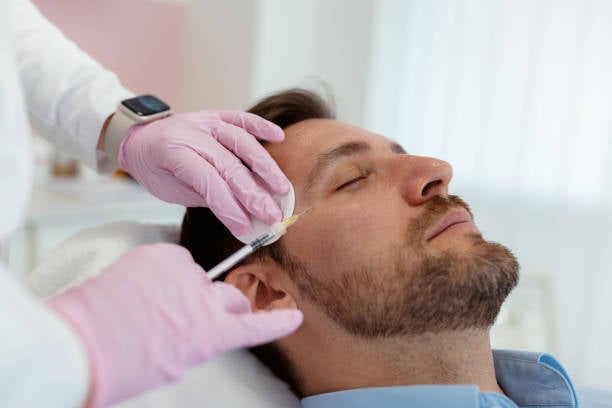Understanding the optimal frequency for Botox injections is essential for achieving the best results while maintaining safety and longevity. Whether you're considering Botox for cosmetic reasons or for therapeutic purposes, knowing how often to undergo treatment can help you plan effectively and ensure consistent outcomes.
The Role of Botox Injections in Riyadh
For those in Riyadh, Botox Injections in Riyadh are increasingly popular as a safe and effective way to combat signs of aging or manage medical conditions. Clinics in this region often follow international guidelines, offering personalized treatment plans tailored to each patient's needs. The frequency of Botox treatments in Riyadh generally aligns with global standards, with most clinics recommending sessions every 3 to 4 months to maintain optimal results.
What Is Botox and How Does It Work?
Botox, a popular neurotoxin derived from Clostridium botulinum, works by temporarily paralyzing or relaxing muscles. When injected into targeted areas, it reduces the appearance of wrinkles and fine lines, providing a smoother, more youthful look. Besides cosmetic applications, Botox is also used to treat various medical conditions such as migraines, excessive sweating, and muscle spasms. The effects of Botox are not permanent, which is why understanding the ideal treatment schedule is crucial for sustained benefits.
How Frequently Should You Get Botox Injections?
General Recommendations for Botox Frequency
Most patients typically receive Botox injections every 3 to 4 months. This interval is considered optimal for maintaining wrinkle reduction and preventing the formation of new lines. However, the exact timing can vary based on individual factors such as age, skin elasticity, muscle activity, and treatment goals. Some individuals with more active muscles or faster metabolism may require more frequent sessions, while others may extend the interval slightly.
Specific Factors Influencing Botox Frequency
- Age and Skin Elasticity: Younger skin tends to respond better and may require less frequent treatments.
- Muscle Activity: More active muscles may break down the toxin faster, leading to a need for earlier touch-ups.
- Treatment Area: Certain areas, like the forehead or around the eyes, may see quicker muscle activity resurgence, influencing injection frequency.
- Lifestyle and Skin Care: Lifestyle habits, including sun exposure and skincare routines, can impact how long the effects last.
Benefits of Regular Botox Treatments
Consistent Botox treatments can lead to better long-term results, including improved skin texture, reduced wrinkle depth, and prevention of new lines. Regular sessions also allow practitioners to adjust dosages and techniques to suit changing facial dynamics, ensuring natural and harmonious outcomes. For many, maintaining a routine schedule helps sustain confidence and aesthetic goals over time.
Key Considerations for Timing Your Botox Treatments
While the general guideline is every 3 to 4 months, individual needs may vary. Some signs that you might need a touch-up include the return of wrinkles, increased muscle activity, or a decrease in the smoothness of the treated area. It’s essential to work closely with a qualified specialist who can assess your specific case and recommend the best treatment interval. Regular follow-ups are vital to optimize results and ensure safety.
Botox Treatment Schedules
Pros of Frequent Botox Injections (Every 3 Months)
- Maintains consistent wrinkle reduction
- Prevents new lines from forming
- Allows for dose adjustments based on muscle activity
- Supports long-term skin health and appearance
Cons of Frequent Botox Injections
- More frequent clinic visits
- Potential for cumulative effects if not properly managed
- Slightly higher overall maintenance
Pros of Extended Intervals (Every 4-6 Months)
- Less frequent treatments
- Greater flexibility in scheduling
- Reduced total number of injections over time
Cons of Extended Intervals
- Risk of wrinkles returning or deepening
- Possible need for higher doses during touch-ups
- Less control over early signs of aging
Comparison Summary
AspectFrequent Treatments (3 Months)Extended Treatments (4-6 Months)MaintenanceConsistent wrinkle controlSlightly less consistentConvenienceMore visits requiredFewer visitsCost EffectivenessPotentially higherMay save costs over timeLong-term ResultsBetter prevention of aging signsRisk of less control over early aging
How to Maximize the Effectiveness of Botox Treatments
To get the most out of your Botox injections, consistency is key. Follow your practitioner’s advice regarding treatment intervals, and maintain a healthy lifestyle that supports skin health. Proper skincare, sun protection, and avoiding smoking can prolong the effects of Botox and enhance overall results.
Final Thoughts
The ideal frequency for Botox Injections in Riyadh or elsewhere depends on individual factors and aesthetic goals. Most people find that a treatment schedule of every 3 to 4 months strikes the right balance between maintaining results and minimizing unnecessary procedures. Regular assessments with a qualified specialist will help tailor the treatment plan to your evolving needs, ensuring natural-looking and satisfying outcomes.
Consultation
If you’re considering Botox and want personalized guidance, scheduling a consultation is a crucial step. The Enfield Royal Clinic offers expert consultations where experienced professionals can evaluate your skin, discuss your goals, and create a customized treatment plan. This personalized approach ensures you receive safe, effective, and natural results tailored to your unique facial features and lifestyle.

